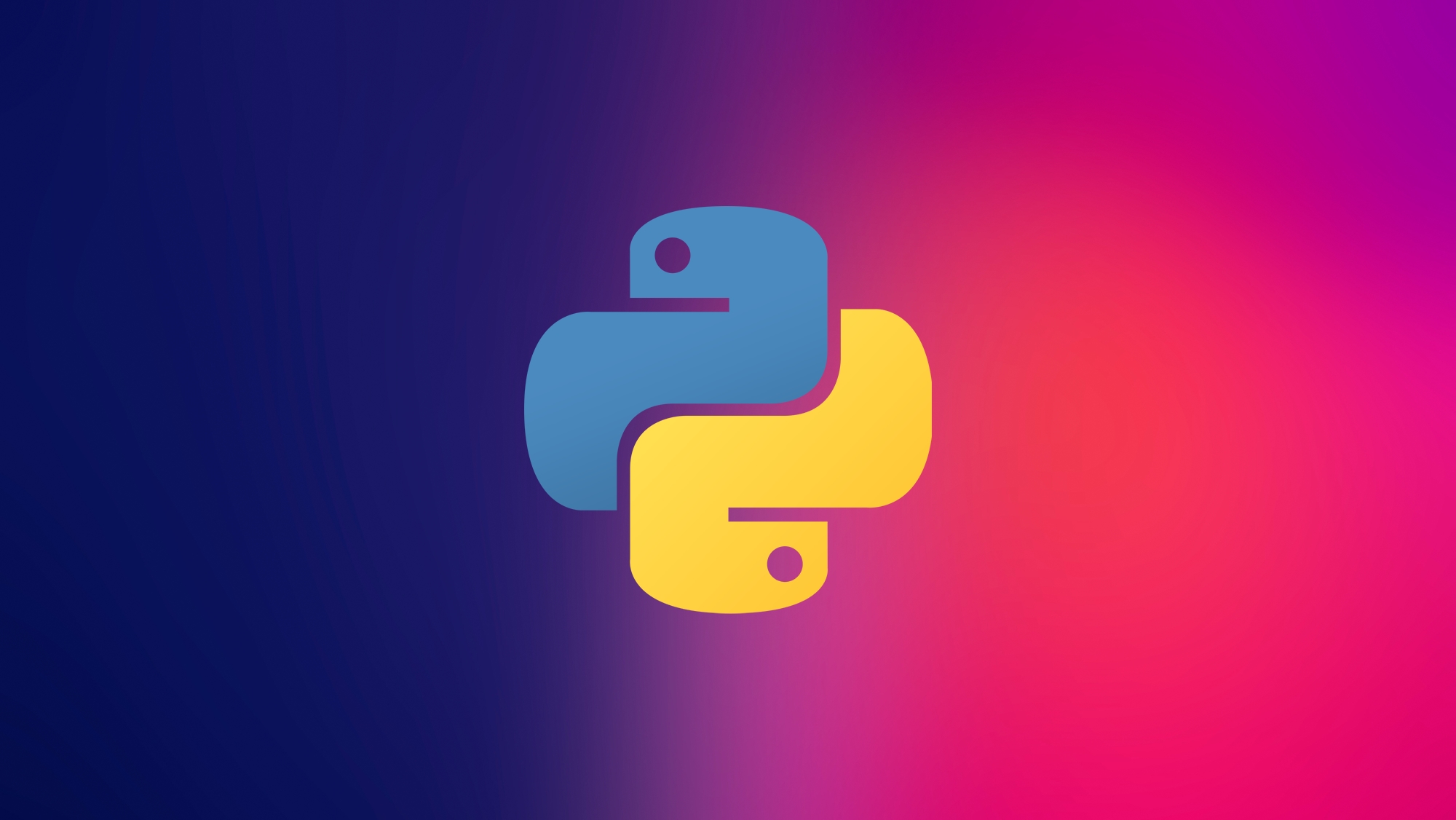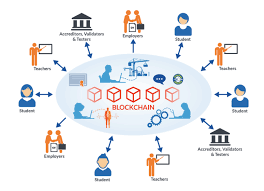Why machine learning for final year projects?
Introduction to Machine Learning
Machine Learning (ML) is a subset of artificial intelligence (AI) that focuses on developing algorithms and models that enable computers to learn and make predictions or decisions without being explicitly programmed. The fundamental idea behind machine learning is to allow computers to learn from data and improve their performance over time.

Machine learning Projects for Final year
Why Machine Learning for Final-year projects?
Machine learning is at the forefront of technological advancements. Undertaking a project in this field allows students to work on cutting-edge technologies, contributing to ongoing innovations.
Machine learning has a wide range of practical applications in diverse fields such as healthcare, finance, marketing, and more. Students can address real-world problems and make a meaningful impact.
What are some popular machine learning projects?
As of my last knowledge update in recent times, several machine learning projects gained popularity due to their innovation, impact, and relevance in various domains. Keep in mind that the popularity of projects may change over time, and new projects continually emerge. Here are some popular machine-learning projects:
1) Decentralized Voting system using Blockchain

The traditional voting systems employed in many democratic societies face challenges related to security, transparency, and accessibility. This paper proposes a Decentralized Voting System utilizing Blockchain technology to address these issues. By leveraging the decentralized and tamper-resistant nature of blockchain, the proposed system aims to enhance the integrity and inclusivity of the voting process. The system comprises a blockchain infrastructure, utilizing smart contracts to define the rules and conditions of the voting process. Voters undergo a secure identity verification process, receiving a unique cryptographic key upon registration. The casting of votes is conducted through a secure online platform, ensuring the anonymity and privacy of each voter through cryptographic techniques such as zero-knowledge proofs.
2) UPI Fraud Detection Using Machine Learning

With the rapid adoption of Unified Payments Interface (UPI) for financial transactions, there is an increasing need for robust fraud detection mechanisms. This paper presents a UPI Fraud Detection System that harnesses the power of Machine Learning (ML) to identify and mitigate fraudulent activities in real-time. The system utilizes a comprehensive dataset containing transactional attributes such as transaction amount, frequency, location, and device information. Through feature engineering, relevant features are extracted, and various machine learning algorithms, including ensemble methods and anomaly detection techniques, are employed to model normal transaction behavior and detect anomalies indicative of fraudulent activities. The proposed system operates in near real-time, allowing for timely intervention and prevention of potential fraud. It adapts to evolving fraud patterns by continuously learning from new data, ensuring adaptability in the face of emerging threats.
3) DeepFake Face Detection using Machine Learning

The rise of DeepFake technology poses a significant threat to the authenticity and trustworthiness of digital media, particularly in the context of facial manipulation. This paper addresses this challenge by introducing a DeepFake Face Detection System utilizing advanced Machine Learning (ML) techniques. The proposed system employs a diverse dataset comprising authentic and DeepFake facial images, incorporating variations in lighting conditions, poses, and backgrounds. Through Convolutional Neural Networks (CNNs) and transfer learning, the model is trained to discern subtle visual cues indicative of facial manipulation. Key facial features and subtle artifacts specific to DeepFake generation are identified and analyzed, contributing to the development of a robust and efficient detection model. The system operates in real-time, providing an immediate response to potential DeepFake threats in various digital media contexts. The significance of this research lies in its contribution to the ongoing efforts to combat the malicious use of DeepFake technology. By leveraging machine learning, the proposed system acts as a proactive defense mechanism, reinforcing the integrity of digital media and preserving trust in visual content across diverse platforms. As DeepFake threats continue to evolve, this system provides a valuable tool for maintaining authenticity and ensuring responsible use of digital imagery.
4) Employee Layoff Prediction using Recurrent Neural Network

The task of predicting employee layoffs is a critical aspect of workforce management, allowing organizations to proactively address challenges and mitigate potential negative impacts. This paper introduces an Employee Layoff Prediction System employing Recurrent Neural Networks (RNNs) to forecast impending workforce reductions. The system utilizes a historical dataset encompassing various employee-related features such as performance metrics, tenure, training, and departmental data. Through careful preprocessing and feature engineering, the dataset is prepared for input into the RNN architecture, allowing the model to capture temporal dependencies and patterns within the data. The recurrent nature of the neural network enables the model to analyze sequential information, considering the evolving dynamics of employee-related factors over time. The training process involves learning from past instances of layoffs, enabling the system to generalize and make predictions for future scenarios.
5) Secure Banking Transactions Using Blockchain Technology

In the era of digital finance, ensuring the security and integrity of banking transactions is paramount. This paper introduces a novel approach to enhance the security of banking transactions through the implementation of Blockchain technology. The proposed system aims to mitigate common risks associated with online transactions, such as fraud, data breaches, and unauthorized access. The Secure Banking Transactions System leverages a permissioned blockchain, ensuring that only authorized parties participate in the transaction validation process. Each transaction is securely recorded in a tamper-resistant and transparent distributed ledger, providing an immutable record of financial activities. Smart contracts are employed to automate and enforce predefined rules and conditions, eliminating the need for intermediaries and reducing the risk of human error. This decentralized and trustless nature of blockchain technology ensures that transactions are executed with a high degree of transparency and reliability.
6) AI-based Multi Disease Detection using Machine Learning

As the demand for early and accurate disease detection grows, this paper introduces an innovative AI-based Multi Disease Detection System using Machine Learning. The proposed system addresses the complexity of diagnosing multiple diseases simultaneously, leveraging the capabilities of advanced machine learning algorithms. The system integrates diverse medical datasets containing information related to various diseases, including symptoms, medical history, and diagnostic test results. Through feature extraction and a carefully curated dataset, the model is trained to recognize patterns indicative of multiple diseases concurrently. A hybrid machine learning approach, combining deep learning and traditional machine learning techniques, is employed to enhance the accuracy and interpretability of the model. Convolutional Neural Networks (CNNs) are used for image-based diagnostics, while ensemble methods handle non-image data, ensuring a comprehensive and robust disease detection framework.
7) Fake Job Post Detection using Machine Learning

Fake Job Post Detection
The proliferation of online job platforms has led to an increase in the prevalence of fake job postings, posing a significant threat to job seekers and employers alike. This paper introduces an innovative approach to tackle this issue through the development of a Fake Job Post Detection System using Machine Learning. The proposed system leverages a diverse dataset encompassing legitimate and fraudulent job postings, incorporating textual and contextual features. Through natural language processing and feature engineering, the model is trained to identify patterns and anomalies indicative of deceptive job advertisements. A combination of supervised and unsupervised machine learning techniques is employed to accommodate the dynamic nature of fake job posts. The model is trained on labeled data, learning from historical instances of fraudulent postings, and adapts to emerging patterns through unsupervised learning mechanisms.
8) AI Car with Real-time detection of Damaged Road and Lane Detection

In the pursuit of enhancing road safety and optimizing autonomous driving experiences, this paper introduces an innovative AI-based Car System with Real-time Detection of Damaged Road and Lane Detection. The proposed system leverages advanced computer vision and machine learning techniques to identify and navigate through damaged road conditions while ensuring precise lane adherence. The system integrates a robust sensor suite, including cameras and LiDAR, to capture real-time environmental data. Convolutional Neural Networks (CNNs) are employed for image analysis, enabling the identification of damaged road segments, such as potholes, cracks, and obstacles, while simultaneously performing accurate lane detection. To address the dynamic nature of road conditions, the model is trained on diverse datasets, encompassing various environmental scenarios and damage types. Transfer learning techniques are applied to generalize the model’s capability to adapt to new and unseen road conditions.
9) A Blockchain-Based Credible and Secure Education Data Management

Student Blockchain
The increasing reliance on digital education platforms has underscored the need for a robust and secure system for managing education data. This paper introduces a pioneering approach to address this challenge through the development of a Blockchain-Based Credible and Secure Education Data Management System. The proposed system leverages blockchain technology to establish a decentralized and tamper-resistant ledger for recording and verifying education-related transactions and credentials. Smart contracts are employed to automate the validation and authentication processes, ensuring the credibility of educational data. Student records, certifications, and academic achievements are securely stored in the blockchain, providing a transparent and immutable record accessible to authorized parties. The decentralized nature of the system mitigates the risk of data manipulation or unauthorized access, enhancing data security and integrity. To ensure scalability and interoperability, the system is designed to integrate with existing educational databases and platforms. Blockchain’s cryptographic features are harnessed to protect sensitive student information while still allowing for seamless verification by educational institutions, employers, and other relevant entities.
10) Heart Attack Risk Prediction using Retinal Eye Images

heart attack prediction
Cardiovascular diseases, including heart attacks, remain a leading cause of global mortality. This paper introduces an innovative approach to early detection through the use of Retinal Eye Images for Heart Attack Risk Prediction. Leveraging the potential correlation between retinal changes and cardiovascular health, this system employs advanced image analysis techniques and machine learning algorithms. The proposed system utilizes a diverse dataset of retinal images and associated patient health records. Convolutional Neural Networks (CNNs) are employed for feature extraction and analysis, enabling the identification of subtle indicators associated with cardiovascular risk factors. Key features from retinal images, such as vessel morphology and microvascular abnormalities, are extracted to train the predictive model. The model is then capable of assessing an individual’s risk of experiencing a heart attack based on the patterns identified in their retinal scans. Extensive evaluations on diverse datasets demonstrate the efficacy of the Heart Attack Risk Prediction System. The model exhibits high accuracy and sensitivity, showcasing its potential as a non-invasive, early detection tool for cardiovascular risk.
11) Realtime Face Speech Emotion Recognition in Worker Stress Analysis
Workplace stress can significantly impact employee well-being and productivity. This paper introduces an innovative approach to assess worker stress levels through Real-time Face Speech Emotion Recognition. Leveraging the fusion of facial expressions and speech features, this system employs advanced machine learning techniques to provide a holistic analysis of emotional states in real-time. The proposed system utilizes a multimodal dataset containing facial images and corresponding speech samples collected from workers in diverse stress scenarios. Convolutional Neural Networks (CNNs) and recurrent models are employed for feature extraction and analysis, allowing for the recognition of nuanced emotional expressions in both face and speech. The fusion of facial and speech features enables a more comprehensive understanding of emotional states, providing a nuanced assessment of worker stress. The system operates in real-time, allowing for timely interventions and proactive stress management strategies.
12) Mental Health Detection Machine Learning
Mental health disorders represent a growing global concern, necessitating innovative approaches for early detection and intervention. This paper introduces a novel Mental Health Detection System utilizing advanced Machine Learning techniques. By analyzing diverse datasets containing behavioral, physiological, and self-reported data, the proposed system aims to identify early indicators of mental health issues. The system employs a hybrid machine learning model, combining supervised and unsupervised learning techniques. Supervised learning is utilized for classification tasks, while unsupervised learning identifies patterns and anomalies indicative of mental health conditions in unlabeled data. Key features, including sentiment analysis of textual data, physiological signals, and behavioral patterns, are extracted to train the model. The system is designed to adapt and learn from evolving mental health patterns, offering a dynamic and personalized approach to detection.
13) Vitamin Deficiency Detection using Image Processing
Vitamin deficiencies are pervasive health concerns that can have profound implications on an individual’s well-being. This paper introduces an innovative approach for early detection of Vitamin Deficiency using Image Processing techniques. Leveraging the visual cues manifested in physiological symptoms, the proposed system aims to analyze facial images to identify potential indicators of specific vitamin deficiencies. The system utilizes a dataset comprising facial images of individuals with known vitamin deficiency statuses. Image Processing algorithms are employed to extract features such as skin tone, pallor, and visible symptoms like dermatological manifestations. Machine learning models, including classifiers and regression algorithms, are trained to associate these features with specific vitamin deficiencies. Extensive evaluations on diverse datasets demonstrate the efficacy of the Vitamin Deficiency Detection System in accurately identifying potential deficiencies. The system exhibits high sensitivity and specificity, showcasing its potential as a non-invasive and accessible tool for early detection.
14) Intelligent Traffic System for Urban Conditions using Real-time Vehicle Tracking
Urban traffic conditions pose complex challenges that necessitate intelligent and adaptive systems to enhance efficiency and mitigate congestion. This paper presents an Intelligent Traffic System (ITS) designed for Urban Conditions, leveraging real-time vehicle tracking to optimize traffic flow. The proposed system integrates advanced technologies, including computer vision and machine learning, to provide a comprehensive solution for urban traffic management. Utilizing a network of cameras and sensors, the system performs real-time vehicle tracking and analyzes traffic patterns. Machine learning algorithms, including clustering and predictive modeling, are employed to understand and predict traffic behavior. The system adapts dynamically to changing conditions, allowing for optimal traffic signal control and congestion management. Key features include real-time data processing, adaptive signal control, and anomaly detection. The system is designed to prioritize emergency vehicles, optimize signal timings based on traffic density, and provide insights for urban planning.
15) Medicine Overdose Prediction Using Machine Learning
The increasing prevalence of medicine overdose incidents underscores the critical need for proactive and personalized healthcare interventions. This paper introduces a predictive model for Medicine Overdose using Machine Learning, aiming to identify individuals at risk based on their medical history, demographics, and prescription data. The proposed system utilizes a comprehensive dataset encompassing patient records, medication histories, and demographic information. Advanced machine learning algorithms, including decision trees and ensemble methods, are employed to analyze the complex interplay of factors leading to potential overdose risks. Key features such as prescription patterns, comorbidities, and demographic variables are extracted to train the predictive model. The system operates in real-time, providing timely warnings and actionable insights for healthcare professionals and patients alike. Extensive evaluations on diverse datasets demonstrate the efficacy of the Medicine Overdose Prediction System. The model exhibits high accuracy and sensitivity, showcasing its potential as a valuable tool for personalized healthcare and overdose prevention. This research not only contributes to the field of predictive healthcare but also addresses a pressing public health concern. The proposed system holds promise for reducing the incidence of medicine overdoses, improving patient safety, and facilitating targeted interventions to ensure optimal healthcare outcomes.
16) Election Results Prediction Using Machine Learning and Twitter
The advent of social media has transformed the landscape of political discourse, offering a vast repository of public sentiments and opinions. This paper introduces an innovative approach to Election Results Prediction using Machine Learning, with a focus on harnessing real-time data from Twitter. By analyzing the sentiments expressed in tweets, this system aims to forecast election outcomes and trends. The proposed system utilizes natural language processing techniques to extract sentiment features from a large corpus of tweets related to political candidates and election-related topics. Machine learning algorithms, including sentiment analysis models and ensemble methods, are employed to analyze the sentiment patterns and predict election results. Key features include sentiment scores, tweet volume, and temporal dynamics. The system adapts dynamically to changing sentiment trends, providing near-real-time insights into public opinion leading up to and during elections. Extensive evaluations on historical election data demonstrate the efficacy of the Election Results Prediction System. The model exhibits high accuracy in predicting election outcomes, showcasing its potential as a valuable tool for political analysts, pollsters, and the general public.
17) Patient Electronic Health Records using blockchain Security Framework
The secure and interoperable management of patient health records is paramount for delivering efficient and reliable healthcare services. This paper introduces a groundbreaking approach to Patient Electronic Health Records (EHR) using a Blockchain Security Framework. Leveraging the decentralized and tamper-resistant characteristics of blockchain, the proposed system aims to enhance the privacy, security, and accessibility of patient health data. The system utilizes a blockchain network to store and manage patient EHR, ensuring data integrity and protection against unauthorized access. Smart contracts are employed to enforce fine-grained access controls and automate data-sharing permissions, empowering patients with control over their healthcare information. To address scalability and interoperability challenges, the proposed system integrates with existing healthcare infrastructure, providing a seamless and secure transition to blockchain-based EHR. Advanced cryptographic techniques are employed to safeguard patient confidentiality while enabling secure and auditable access for authorized entities.
18) Respiratory Disease Classification Using Lung Sounds with CNN-LSTM
Respiratory diseases impose a substantial global health burden, necessitating efficient and timely diagnostic tools. This paper introduces a novel approach for Respiratory Disease Classification using Lung Sounds with a hybrid Convolutional Neural Network and Long Short-Term Memory network (CNN-LSTM). Leveraging the distinctive acoustic patterns present in lung sounds, the proposed system aims to accurately classify respiratory diseases based on audio data. The system utilizes a diverse dataset of lung sound recordings from individuals with various respiratory conditions. A CNN-LSTM architecture is employed for feature extraction and sequential analysis, enabling the model to capture both spatial and temporal dependencies in the audio data. Key features such as wheezes, crackles, and other pathological sound indicators are automatically identified by the model. The system adapts dynamically to different respiratory conditions, providing a robust and scalable solution for disease classification.
19) Breast Cancer Detection using Deep Learning Ultrasound Images
Breast cancer remains a leading cause of morbidity and mortality worldwide, underscoring the critical need for accurate and timely detection. This paper presents an innovative approach to Breast Cancer Detection using Deep Learning, leveraging the capabilities of convolutional neural networks (CNNs) for the analysis of mammographic images. The proposed deep learning model is trained on a diverse dataset comprising mammograms with associated clinical outcomes. Through transfer learning and fine-tuning, the model learns intricate patterns indicative of malignant and benign lesions, enabling robust and scalable breast cancer detection. Key features such as microcalcifications, masses, and architectural distortions are automatically identified by the deep learning model. The system operates in near real-time, providing a rapid and accurate assessment of mammographic images. Extensive evaluations on benchmark datasets demonstrate the efficacy of the Deep Learning-based Breast Cancer Detection System. The model exhibits high sensitivity and specificity, showcasing its potential as a valuable tool for radiologists and healthcare practitioners. This research not only contributes to the field of medical imaging but also addresses the pressing need for advanced technologies in breast cancer diagnosis. The proposed deep learning approach holds promise for enhancing early detection rates, reducing false positives, and ultimately improving patient outcomes in the fight against breast cancer.
20) Secure Organ Donation using Blockchain Technology
Organ donation processes demand a secure, transparent, and tamper-resistant framework to ensure the integrity and traceability of donor-related data. This paper introduces a pioneering approach to Secure Organ Donation using Blockchain Technology. Leveraging the decentralized and immutable characteristics of blockchain, the proposed system aims to enhance the security, efficiency, and ethical standards of organ donation procedures. The system utilizes a blockchain network to securely record and manage organ donation transactions. Smart contracts are employed to automate and enforce predefined rules, ensuring transparent and accountable organ allocation and distribution. This decentralized ledger provides a single source of truth, reducing the risk of data manipulation or unauthorized access. To address privacy concerns, advanced cryptographic techniques are integrated, allowing for secure and confidential storage of sensitive donor information. Access controls are implemented through blockchain’s decentralized consensus, ensuring that only authorized entities can view and modify specific details. This not only protects the privacy of donors but also ensures compliance with data protection regulations. Extensive simulations and real-world testing demonstrate the effectiveness of the Secure Organ Donation Blockchain System. The system not only contributes to the advancement of healthcare technology but also addresses ethical considerations, providing a secure and transparent platform for organ donation processes. The proposed system serves as a foundational step toward a more secure, efficient, and ethical organ donation ecosystem, fostering trust among stakeholders and potentially increasing the pool of organ donors for those in need.
21) Student Teacher Performance Prediction Using Machine Learning
Effective educational systems require a proactive approach to assess and enhance the performance of both students and teachers. This paper introduces a novel framework for Student-Teacher Performance Prediction using Machine Learning, aiming to provide timely insights into academic outcomes. By leveraging diverse datasets encompassing student demographics, academic records, and teacher attributes, the proposed system employs advanced machine learning algorithms to predict student and teacher performances. For student performance prediction, the system incorporates features such as previous academic achievements, attendance records, and socio-economic factors. On the teacher side, attributes like experience, qualification, and teaching methodologies are considered. Supervised machine learning models are trained on historical data to predict future academic outcomes for both students and teachers. The system operates in real-time, facilitating proactive interventions for underperforming students and supporting professional development for teachers. Extensive evaluations on diverse datasets demonstrate the efficacy of the Student-Teacher Performance Prediction System, showcasing its potential as a valuable tool for educational institutions and policymakers. This research not only contributes to the field of educational analytics but also addresses the broader goal of optimizing learning environments. The proposed system holds promise for improving educational outcomes, fostering personalized learning experiences, and aiding in strategic decision-making for educational stakeholders.
Related Tags –
Introduction to machine learning based final year projects, What are final year projects, Why machine learning for final year projects, What are some popular machine learning projects, How to get started with machine learning for final year projects, What are some challenges you may face with machine learning projects, Tips for successful machine learning projects, Resources for final year machine learning projects, Example of Final year machine learning projects, innovative final year projects on machine learning